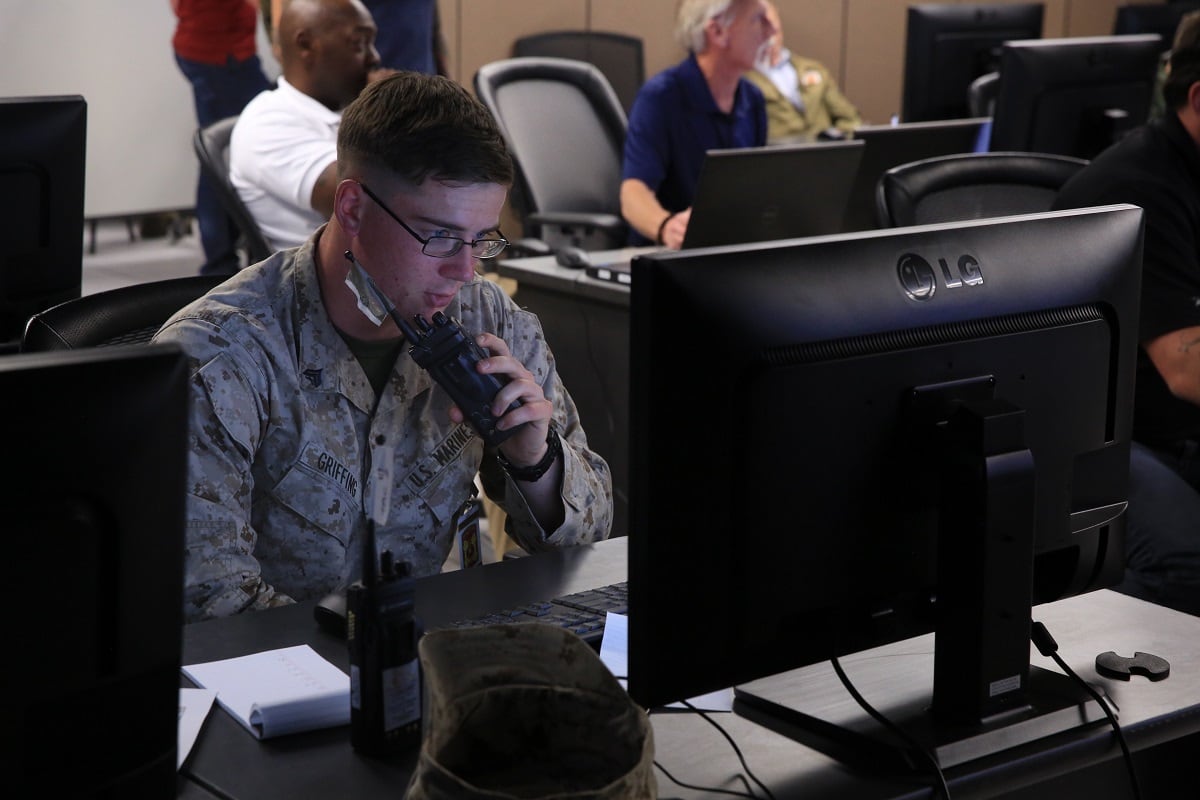TWENTYNINE PALMS, California ― A recent exercise here for the first-time paired Marine infantry in simulators with actual pilots hundreds of miles away in their own simulators for a more realistic scenario these troops might face once on deployment.
It’s part of a larger effort to create a “plug-and-play” model for battalion- and squadron-sized units to use at any time and in any place rather than wait for annual training at the Marine Corps Air Ground Combat Center.
Those efforts were put to the test in predeployment training for pilots from Marine Light Attack Helicopter Squadron 267 talking directly with Joint Terminal Attack Controllers with 1st Battalion, 4th Marine Regiment in Pendleton during the recent exercise.
Col. Patrick R. Hittle told Marine Corps Times in a February interview that the focus is on building a “persistent network” that units can plug into on demand and tailor which parts of the units would talk to each other, depending on the mission.
Maj. Jesse Attig, modeling and simulations officer for the MAGTF Training Command, said that efforts to put systems such as remotely located flight simulators in communication with an infantryman looking at a simulated battle sequence have been done before but on larger levels for annual training events.
Those are Marine Expeditionary Brigade or Marine Expeditionary Force-level exercises for which a large amount of resources is devoted and require months or yearslong planning.
“That’s not a realistic expectation of a battalion combat operations center,” Attig said.

Units at Twentynine Palms, California; Yuma, Arizona; and Camp Pendleton, California, worked remotely to practice direct air support for the recent Command Post Exercise, part of the larger TALONEX 2-18 exercise at the MCAGCC.
While first-person shooters on civilian gaming platforms and simulated air combat games might seem like what an outsider would expect: The systems that the military uses are more focused on specific operations of a particular aircraft or mission set such as a jet fighter, helicopter or a fire mission. All with specific tasks, controls and effects.
One of the challenges, Attig said, is to have all the simulators showing the same terrain. Various simulators from video game-like Virtual Battle Space 3 to the more mechanical flight simulators were developed at various times over the past decades, meaning they must find a common language to talk with each other.
Some were fielded to be stand-alone systems, never intended to link to another system. The simulations must also be conducted in a closed environment so that adversaries can’t simply go online and watch how Marines fight.
That raises security concerns. For instance, some software still runs on Windows XP, an operating system first released in 2001, when many new Marines were still toddlers.
“Bring them onto a network and you’ve just increased the vulnerability,” Attig said.
Then, there are the human factors.
The standard way in which Marines have trained is to have a simulator-specific expert, most often a civilian contractor, going through a scripted sequence of events and the Marines reacting to what’s been pre-written.
“This training helps to emphasize operational cohesion by providing more realism in an exercise where you’re relying on the proficiency of other Marines,” Attig said.
Todd South has written about crime, courts, government and the military for multiple publications since 2004 and was named a 2014 Pulitzer finalist for a co-written project on witness intimidation. Todd is a Marine veteran of the Iraq War.




